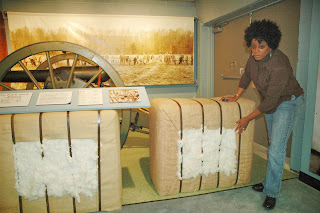 |
| Willie Kiddes Gordon |
He was born in St. Helena Parish on August 6, 1909. At the time of this interview he was 91 years old and he were grateful to God that he was able to think clearly. His mother moved to Amite when he was four months old. His daddy was Adam Gordon, Sr. Who lived in Houston, Texas and Willie was a grown man when he first laid eyes on his own father. His mother often said he was man at six years old. He supported his mother, sisters and brothers from an early age.
Our first public school was first at Ard Chapel. Gordon Chapel was named in honor of his family after he donated a 1/2 acre of land to build a church which also served as a school. Willie taught night school and went on to receive a doctors of divinity degree, conferred on Nov 4, 1962 from Trinity Hall College and Seminary at York, Pennsylvania.
One of his first jobs was digging up trees to clear the land for farming. He dug trees for six dollars an acres. Wllie dug around the tree until the root was exposed, he climb the tree and shook it until it began to fall, jump down and quickly cut the root.
 |
| Mandy Jones Wheat |
His mother was Mandy Wheat a very gracious lady who was a midwife to the community. All but one of Willie's seven children were delivered by his mother. Records from the old Health Unit support the fact that she was mid-wife to many families both black and white. Often times her personal breast milk-was fed to others rather than her own children.
Willie thank God for his memory, he could remember when there were only two stores in Amite; E. J. Kopfler and Sam Coe. Kopfler made deliveries, Horace Robinson was his delivery man. The Sheriff was John Ballard and the town Marshall was Balley Schilling. On the corner where eastside garage is today was a delivery stable owned by Jack Alford. He rented horses and buggies for pleasure rides. Later, he began renting cars. At the time the odometer was on the front wheels.
The Butler family named Butler town. Reid's Quarters was named after Judge Reid. Hyde's quarter's was named after Funny Hyde. Back in those days, very few people owned refrigerators. Amite had an ice plant, which was located where the Amite activity center is today. Three black brothers, Lonnie, George, and Sammy Wheat were the only men that delivered ice. The man that picked up all the supplies from the train depot and delivered to all stores was a black man named Guy Parker. There were two hotels, The Ritz and the Mixon Hotel.
Willie said he was at the courthouse grounds when they hung five Italians who were charged with robbing the bank in Independence and shooting the president of the bank. It was said that they hung all five because no would confess to being the triggerman. One day near what is now Pecora's Cleaner he saw two black men that had been lynched on the street lying in two pine boxes.
One day while walking east in Amite and he crossed the path of another boy who was walking south. There were some cows on the sidewalk and the sidewalk, the other boy began to curse the cows in a loud manner. A white girl was offended and went and told a horse trader name Singiton about a "nigger" on the street. When I got in the next block, several whites put me on their shoulders. Some got a rope and was preparing to hang me until someone recognized me and told them to release me. My stepfather, Bass Wheat was bad about fighting white folk. Bass Wheat drove and ox wagon hauling logs form Montpellier to Roseland to the box factory.
 |
| Willie and Alma Gordon |
Willie met and married Alma Richardson. They lived together happily for 60 years. They held church services in their home when Willie started following Christ. When their children became of school aged, the parish school bus didn't come out in their community to pick-up the school children. They would come so far and no further. Their children had to walk to the pick-up locations. Afterward, Willie purchased a vehicle and put insurance on it and started driving throughout the community to the bus stops picking up the children.
Louisiana power and light stopped their services short of coming into our community. I went to Zachary, Louisiana to request Demco to supply our community with electrical services. They came and installed lights. We were able to put away kerosene-coal oil lamps and flip on a switch for lights.
He also provided two large houses a few block from Southern University at Baton Rouge, La to help young men from his community to go on to higher education. It was very difficult for the black males to afford college during those days. I know another man in Baton Rouge, La that charges $25.00 a month for boys to stays in off campus housing. I charged $10.00 a month, as some of our boys were very poor. Today I can remember as many as 48 men who came from our communities that went on to finish college and are today holding positions of honor throughout our country.
He was a successful farmer. He raised strawberries, cotton and beans. He employed others who were in need of jobs. He worked at Hood Motor Company as a sale representative for many years. He was Amite's first black car salesperson.
Source: Amite Genealogy Library-Photo Album of Mrs. Gracie Perry






































